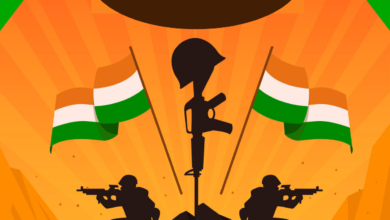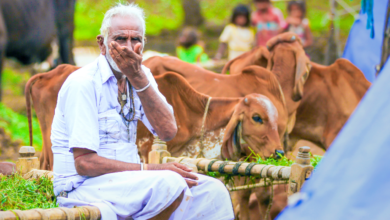Union Minister of Home Affairs and Minister of Cooperation Shri Amit Shah attended the 17th Foundation Day celebrations of National Disaster Management Authority (NDMA) as the Chief Guest, in New Delhi
Union Minister of Home Affairs and Minister of Cooperation Shri Amit Shah attended the 17th Foundation Day celebrations of National Disaster Management Authority (NDMA) as the Chief Guest, in New Delhi
Shri Amit Shah released the training manual of Aapda Mitra Scheme and documents of Aapda Mitra and Common Alerting Protocol scheme
Under the leadership of Prime Minister, Shri Narendra Modi, we are moving towards creating such disaster management system that no matter how severe a disaster may be, not even a single life should be lost and we are well on course to achieve this
Shri Narendra Modi was the only person who, while the Chief Minister of Gujarat, began paying attention to understanding why disasters happen
In order to focus on Climate Change and Global Warming, Shri Narendra Modi created a Climate Change Department in Gujarat, a first in the country
In 2016, Narendra Modi started the National Disaster Management Plan and laid the blueprint for the first national plan
Prime Minister Shri Narendra Modi presented a 10-point program for disaster risk reduction before the world, and, it is country’s responsibility to implement it well
Under the leadership of Shri Narendra Modi, the Government of India has started the Subhash Chandra Bose Aapda Prabandhan Puraskar for all NGOs, social workers and government employees engaged in disaster management to encourage them
NDRF and SDRF as implementing agencies of NDMA have worked to transform disaster management in the country
28 SEP 2021 7:05PM by PIB Delhi
If immediate response is to be initiated duirng a disaster, only people, society and trained Aapda Mitra in villages can do it and this is a very good concept
Aapda Mitra has been implemented on an experimental basis in 30 flood affected districts in 25 states, 5,500 Aapda Mitras and Aapda Sakhis have been trained for flood prevention
We are going to implement the Aapda Mitra Scheme in 350 disaster affected districts
In order to create reassurance amongst volunteers and their families, Government of India has also taken important decision to insure them
The super cyclone in Odisha in 1999 and the earthquake in Bhuj in 2001 shook the country and from there the idea emerged to create a system which is independent in itself and associated with such agencies which can respond immediately
At that time Atal ji was the Prime Minister and he formed a task force and co-incidentally Shri Narendra Modi was the Chief Minister of Gujarat at that time
Earlier the approach of the governments to disasters was relief-centric, now the focus is on early warning, early preparedness, proactive prevention and minimizing loss of lives
If the work of NDRF and SDRF is reviewed from any point of view, then the most important contribution they have made is to instill confidence amongst the people
Today if any major disaster takes place anywhere, as soon as NDRF personnel arrive, people affected by the disaster feel that they will be saved
This trust amongst the people cannot take place without sacrifice, hard work, discipline and continuous training
Earlier, the Inter-Ministerial Central Team (IMCT) used to visit the state after the disaster and make a damage assessment and thereafter funds were sent to the state, this wasted a lot of time
Now the Ministry of Home Affairs, under the leadership of Prime Minister Modi, has decided that no such report is required, now we send an advance IMCT team, which provides immediate relief to the state according to preliminary estimates, so that they can be helped during the disaster itself
Under NDRF and SDRF, about Rs. 53,000 crore and Rs. 60,000 crore, has been provided by the Narendra Modi government for this work
NDMA did a very good job of fighting the COVID-19 pandemic
During the second wave of COVID-19 when a cyclone was about to hit, under the leadership of the Prime Minister Modi, it was ensured that there was no obstruction to movement of oxygen rail or no COVID-19 patient lost life due to oxygen supply or electricity failure in disaster-affected areas
A great beginning has been made in the Northeast through the creation of a Society to utilize Space Science through NESAC
With the help of satellites in the Northeast, the natural flow path of water has been accurately marked, where roads and railways are being built, so that arrangements for water going through under the road can be planned in advance
Union Minister of Home Affairs and Minister of Cooperation Shri Amit Shah attended the 17th Foundation Day celebrations of National Disaster Management Authority (NDMA) as the Chief Guest in New Delhi today. The theme of this year's Foundation Day is 'Stopping Impact of Disaster Incidents in the Himalayan Region'. On this occasion, Shri Amit Shah released the training manual of Aapda Mitra Scheme and plan documents of Aapda Mitra and Common Alerting Protocol. Ministers of State for Home Affairs, Shri Nityanand Rai, Shri Ajay Kumar Mishra and Shri Nishith Pramanik, Union Home Secretary, members and officers of NDMA, Director General of National Disaster Response Force (NDRF) and senior officials of Union Home Ministry along with people related to disaster management attended the function through virtual medium.
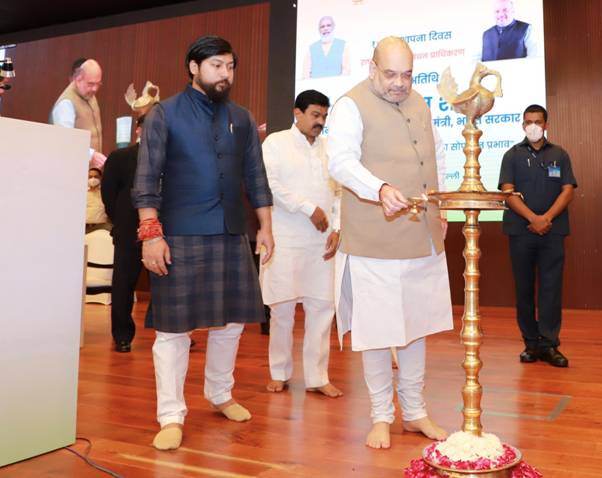
In his address, the Union Minister of Home Affairs and Minister of Cooperation said that NDMA and the National Disaster Response Force (NDRF) and State Disaster Response Force (SDRF) as its implementing agencies have, in the last 17 years, changed the history of disaster management in the country. The work has been done to link the sensitivity of the country with disaster management and this is a great achievement. He said that in a country of 130 crore people, where every state has different weather, many rivers, mountains, long coastlines, in this situation if we are not able to see the sensitivity of the public and society, the introduction of scientific systems to avoid disasters and If we are not able to prepare the mindset to percolate these arrangements down, then we have to be prepared for huge loss of life and infrastructure. But a lot has changed in this field in last 17 years.
Speaking about the two new initiatives launched by NDMA – Aapda Mitra and Common Alert Protocol – Shri Amit Shah said that the Aapda Mitra scheme is very important. He said that NDMA should study the research or good practices to reduce the risk of disaster across the world and take them to the people by adapting them according to the circumstances and challenges of our country and adapting them into a methodology. Shri Shah said that despite several efforts and best facilities provided by the government, it is difficult to take immediate action by agencies like NDMA, NDRF and SDRF as soon as a disaster strikes. He said that no matter how many arrangements have been made, it is natural to take some time to reach from one place to another in such a large country. If in a few moments, immediate action is to be taken at the time of disaster, then only trained disaster friends in the country, society and village-village can do it and this is a very good concept.
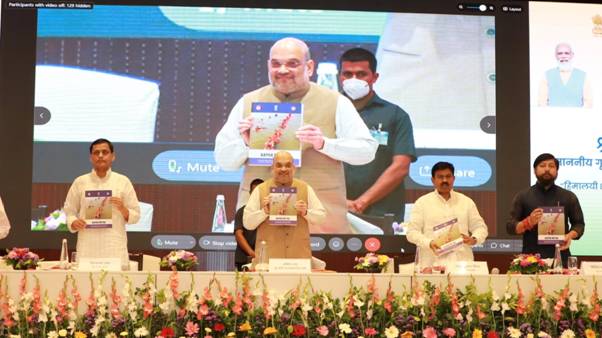
The Union Home Minister said that with the help of Aapda Mitra, to prepare the public and up-gradation of skills of people who have the zeal to fight against disaster, work for others and save people by risking their lives. should do. Arrangements can be made to make them aware of all protocols and take immediate action in case of disaster. He said that Aapda Mitra has been implemented on an experimental basis in 30 flood-prone districts of 25 states. Work has been done to prepare 5,500 Aapda Mitras and Aapda Sakhis for flood protection. Those who can swim were selected for this and wherever there was a flood, they did a great job. Shri Amit Shah congratulated the Aapada Mitras on behalf of the Government and Prime Minister Shri Narendra Modi.
The Union Home and Cooperation Minister said that this experiment has just been done on a very small scale and in a country with a population of 130 crore, 5,500 Aapda Mitras and Aapda Sakhis are a very small in number. The whole country cannot be covered by this, that's why we are going to implement Aapda Mitra scheme in 350 disaster affected districts. He said that many protocols and SOPs have been made in the last 17 years and this system will be implemented in 350 districts to take them to the ground level and take immediate action during a disaster. Shri Shah said that to instill a sense of confidence amongst volunteers and their families, the Government of India has also taken an important decision to insure them. 28 States and Union Territories have signed MoUs with NDMA for this scheme.
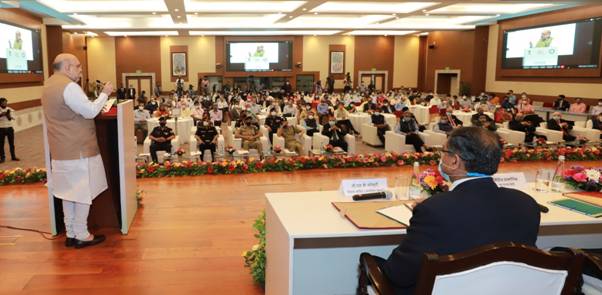
Shri Amit Shah said that Common Alert Protocol should be well publicized. He said that NDMA has taken many very good initiatives under which we can give alert about the location of lightning 6 minutes in advance and a few hours in advance of a large area. Shri Shah said that we have prepared an action plan for cold wave and severe heat, but these are not implemented. He said that many lives can be saved if early warning agencies and such warnings are implemented.
The Union Home and Cooperation Minister said that the journey of disaster management in India started a little late. In 1995, the then National Center for Disaster Management was established and it started under the Department of Agriculture. This was a good start. After that two major incidents happened in our country in two years. In 1999, a super cyclone hit Odisha and killed 10,000 people. After this, in 2001 Bhuj earthquake killed 14000 people. Both these incidents shook the system of the country and the government and from there the idea came that why not make such a system which is independent in itself and associated with such agencies which can respond immediately. At that time Atal ji was the Prime Minister of the country and he formed a task force and co-incidentally Shri Narendra Modi was the Chief Minister of Gujarat at that time. He also contemplated a lot on this in Gujarat and the talk of giving it a concrete shape started and in 2005 NDMA was established, which is headed by the Prime Minister.
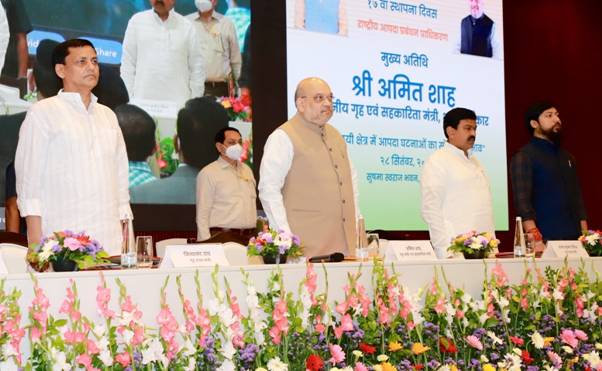
Shri Shah said that actually NDMA should have been set up after the Bhopal gas tragedy, as it was an incident which shook the entire nation, the death of 8,000 people in one city was a really big thing. He said that this journey started during Atal ji’s regime and today when we look back at the last 17 years, we have come a long way, but there is still a long way to go and we have not yet reached the stage of being content. Shri Shah said that our goal should be to create such a disaster management system that no matter how severe the disaster may be, not even one person should die, and the Prime Minister of the country has also set the same goal for us. The change in approach has yielded very good results, the 1999 cyclone alone killed 10,000 people and this year there have been three cyclones but the death toll is not more than 50. Now, we issue early warnings in advance, from there the work of rescuing people is done, arrangements are made to settle the people living in non-permanent houses to safer places. The Union Home Minister said that the states have also put in place a very good mechanism for this and the Centre and the states together have been successful in reducing the death toll to a great extent.
The Union Minister of Home Affairs and Minister of Cooperation said that now the whole outlook has changed. Earlier the approach of governments towards disasters was relief-centric. Everyone should be helped after the disaster, they should be given money, arrangements should be made for settlement, food, and medicines should be arranged in case of spread of disease. But now, the focus is on early warning, proactive prevention, early preparedness and minimizing loss of life. We should continue this approach and strive for reaching zero loss of life.
Shri Amit Shah said that if the work of NDRF and SDRF is reviewed from any point of view, then they have done the most important work of instilling confidence in the minds of the people of the country. Today, any major disaster happens anywhere, as soon as the NDRF personnel arrive, those affected by the disaster feel they will be saved. This credibility is not possible without sacrifice, hard work, discipline and continuous training. NDAF has done a very good job of creating a culture of putting their life in danger for saving others.
Shri Amit Shah said that in 2016, Prime Minister Shri Narendra Modi launched the National Disaster Management Plan, NDMP, and laid the blueprint for the first national plan prepared in the country. The plan is subsequently designed under the SENDAI Disaster Risk Reduction Framework and covers all aspects of minimizing risk and loss of life and property. Now, the government has also prepared a plan to integrate all the agencies and departments, even the smallest of the units. He said that whether it is a small village or a big metro city or a remote district, or a coastal city, every place has a plan ready to respond to the disaster.
The Union Home Minister said that there are many big industries, Public Sector Undertakings (PSUs) across the country and many large companies have resources to fight the natural disasters, but they were never linked with the government earlier. Today, every collector has a list of available resources, whether with the government, public sector undertakings or private companies, to fight a disaster in his district. There is also a system to use them and as soon as the warning arrives, these resources can be mobilized immediately. Earlier, when disasters happened, all these resources were not in use, but due to this type of planning, all these are being utilized and the loss of life is being minimized and this is a huge thing.
Shri Amit Shah said that since 2016 till now, solution for only nine disasters were presented by NDMA and now solution for eight more disasters have been presented. Thus, to respond to a total 17 types of disasters, NDMA has put the action plan in front of the people. Prime Minister Shri Narendra Modi presented a 10-point program for disaster risk reduction in front of the world, and under this, it is the full responsibility of India to implement it well. He said that we have achieved the desired results, but we have to move towards the goal of zero loss of life. Shri Shah said that the Government of India, under the leadership of Shri Narendra Modi, has also started the Subhash Chandra Bose Aapda Prabandhan Puraskar for all the NGOs, social workers and government employees engaged in disaster management, so that they can be encouraged and it is a kind of public acknowledgement for their work. Shri Shah said that we have achieved many achievements in the last two years. In many places there have been storms, floods have also occurred, even the record number of landslides have been reported. More so, landslides were reported for the first time in a state like Maharashtra. We have fought all these threats very well in last 2 years and for this NDRF deserve rich compliments.
The Union Minister of Home Affairs and Minister of Cooperation said that the government has not neglected relief work along with fighting the natural calamities. He said that earlier the Inter-Ministerial Central Team (IMCT) used to visit the state after the disaster was over and verify the damage assessment and then the amount was released to the state, which used to waste a lot of time. But, now the Ministry of Home Affairs, Government of India, under the leadership of Prime Minister Shri Narendra Modi has decided that no such report is required, and the ministry sends an advance IMCT team, which as per the preliminary estimates, gives immediate relief to the state, thereby providing the relief to the states during the disaster and prevent further damages.
Shri Amit Shah said that even the relief work has not been ignored and due to this a lot of changes are seen today. In 2019-20, 19 IMCT teams went to 17 states while in 2020-21, 22 teams visited 14 states, which is a big achievement. He said that under NDRF and SDRF, about Rs 53,000 crore and Rs 60,000 crore has been given by the Narendra Modi government for this work.
The Union Home Minister said that an action plan has also been prepared to fight against the scorching heat. He said that Apada Mitra should also be created against the scorching heat and they should also be prepared for the heat wave. Shri Shah said that nothing happens just by preparing an action plan, until it is brought down to the ground level. Aapda Mitras and local bodies of the state can be the agencies to bring it down to the ground level. It is also our job to take this plan to the Gram Panchayat, Tehsil or District Panchayat and Municipal Corporation. He said during recent Yaas and Tauktae cyclones we did a very good job.
The Union Home Minister and Minister of Cooperation said that when the second wave of COVID-19 hit the country, NDMA did a very good job of fighting against this calamity on mankind. If any unbiased agency assesses, then it will say that if the fight against COVID-19 has been fought in any country in the best way in the world, then it has been fought in India. With a population of 130 crores, limited resources, limited infrastructure, we had lowest mortality rate in the world, and our number of COVID-19 cases per million people was also very low. He said during second wave even big countries got upset. At the time when there was a crisis of oxygen, at the same time the cyclonic storm arrived. Oxygen trains were running, oxygen plants that were in the Eastern region were all under the storm. We tried to save the lives of patients who were on oxygen support. Shri Shah said that all these things did not reach the public, but we had advance information and the Home Ministry and the NDMA together made all the plans. There was no report of an accident of a train carrying oxygen at a single place, there was no hospital where there was no alternative electricity system, not a single person died due to lack of electricity, we prevented a huge accident by shutting down oxygen plants in time. If this information had not come on time, if the arrangements of NDRF and NDMA had not been in place, then it would have been very difficult to do this and there was a possibility of loss of hundreds of lives. He said that at that time there was fear as to what would happen when the storm would actually come and no matter how many arrangements were made it would fail before nature. It is both a matter of satisfaction and pride to say that during that during the cyclone under the leadership of Shri Narendra Modi, not a single patient who was undergoing treatment for COVID-19 lost his life due to lack of electricity or oxygen. It is an example of the kind of results technology, advance information and planning can yield.
Shri Amit Shah said that our country has made a new beginning. India has introduced disaster management education at middle and high schools as training in disaster management will help but will not be enough. But if the culture of disaster training and disaster management are inculcated in children, then there will be less need for training. In such a large country, when children in middle and high school learn about disaster management and imbibe this culture and when they become adult citizens, then wherever there is a disaster in the country, that culture will immediately come to the surface and they will stand up to help people.
The Union Home Minister said that we have started a big new experiment in the North East. A Society has been formed to harness space science in the Northeast through NESAC. How can we develop by using satellite technology. We have started using it in disaster management by doing advance planning from last year. In the Northeast, the Brahmaputra river is sure to be flooded, but the topography there is such that we can easily transfer the water of the Brahmaputra to a lake of thousands of hectares before it floods. If we make a lake, the chances of flooding the Brahmaputra are reduced by 40 percent. NESAC is working to find such type of location and it has also been successful. So far 19 locations have been found, where big lakes will be built and energy will not be used to send water there as water will reach through topography. This is a new beginning and we have taken it one step further. After Shri Narendra Modi became the Prime Minister, the winds of development have come to the North-East and many roads are being built, because without connectivity the development of North-East is not possible. But these roads and rails also stop the natural flow of water and with the help of satellites, we have accurately marked the natural flow of water where the roads and railways are being built, so that the system of water going from under the road is made in advance. He said this has not been taken care since 15 years in the construction of highways across the country, so when we go to inspect the flood affected area, it is found that there is no water on one side of the road but on the other side the whole area is submerged, because it’s natural flow has been stopped. He said that satellites have also been used for flood mapping in road and railway construction.
Shri Amit Shah said that out of 36 states and union territories of the country, 27 are severe disaster prone states and 58 percent of the land area is prone to moderate to very high intensity of earthquakes, 12 percent is flood prone area where river flows through erosion. About 7,516 kms of coastline is marked by cyclone vulnerabilities, 68 percent of the arable area is prone to drought every third year and around 15 percent of the land in mountains is prone to landslides. About 5,161 urban units, be it municipal or municipal corporation, are prone to floods and at such times disaster management in our country is a huge responsibility.
The Union Home Minister and Minister of Cooperation said that a lot of work has been done after the office of Prime Minister by Shri Narendra Modi. Shri Narendra Modi was the only person who, being the Chief Minister of Gujarat, started paying attention to disasters. To pay attention to both Climate Change and Global Warming, Shri Narendra Modi was the first in the country to create a climate change department in Gujarat, because managing a disaster is one thing and making arrangement so that a disaster does not take place is another thing. He said that the world appreciates India's role in the Paris Agreement under the leadership of Prime Minister Modi. Along with spreading awareness for single use plastic across the country, the work of converting electricity generation into solar and windmill to fight Climate Change and Global Warming is also done in a better way.
Shri Amit Shah said that potential impact of Climate Change and controlling the intensity and frequency of disasters through collective efforts of disaster management are two major challenges before us. He said that country is completing 75 years of Independence under the leadership of Prime Minister Shri Narendra Modi and I have full confidence that we will do many such works in this field too, so that the destination of 10 years can be achieved in a single year. Congratulating the NDMA and NDRF, the Union Home Minister and Minister of Cooperation said that they have won the trust of the people of the country with their very good performance. He said we have covered a lot of distance but the journey is still not complete. Shri Amit Shah said that we shall all move forward at a fast pace towards this goal, I want to wish everyone good luck.
*****
NW/RK/AY/ RR
(Release ID: 1759022)
Visitor Counter : 3




